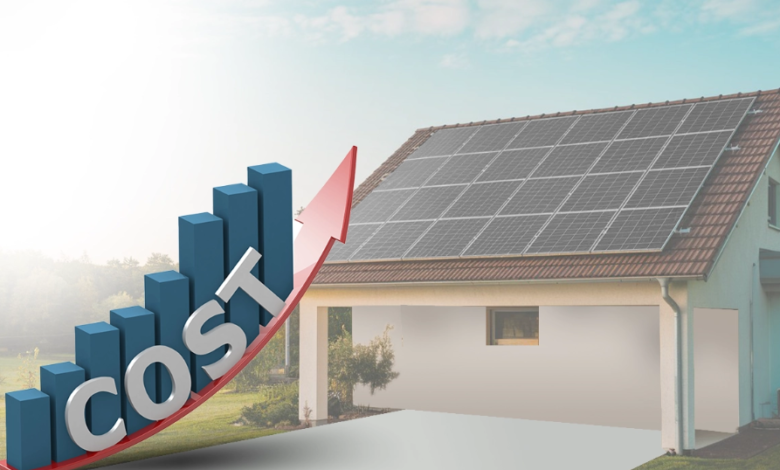The Hidden Cost Factors in Solar Installation — And How to Predict Them

Solar power promises lower bills, cleaner energy, and long-term savings — but before you install panels, it’s crucial to understand the full picture of costs.
Most homeowners look only at the installation quote and assume that’s the final number. In reality, solar pricing has layers — from hardware and labor to permits, grid connections, and efficiency losses.
Ignoring these hidden costs can stretch your payback period and distort your expectations. Fortunately, tools like a net meter calculator can help you forecast the true return on your investment — including the parts installers often overlook.
Let’s break it all down.
1. The Myth of “One Price Fits All”
Solar companies love to advertise flat-rate deals — “$10,000 for a 5 kW system!” — but that’s rarely the full story.
Your actual cost depends on multiple factors unique to your home:
- Roof angle and structure
- Type of inverter used
- Local labor costs
- Utility connection fees
- Government permits and inspections
So, while your neighbor may get a great deal, your total could differ by thousands. This is why calculating your real payback period with an accurate net meter calculator is so important — it adjusts for your exact conditions instead of using broad averages.
2. Equipment Quality and Brand Differences
Not all solar panels are created equal. Cheaper models might save you money upfront but can underperform or degrade faster over time.
Premium panels (like LG, SunPower, or REC) often cost 15–25% more but offer:
- Higher efficiency (more electricity per square meter)
- Longer warranties (20–25 years)
- Better temperature tolerance
That difference directly affects your long-term savings and ROI. Spending a little more upfront could shorten your payback period by producing more consistent power over decades.
3. Inverter and Battery Costs
Your inverter — the component that converts DC energy from panels into AC power for your home — is often overlooked but essential.
String inverters are cheaper but less efficient if one panel is shaded. Microinverters cost more but optimize each panel individually.
If you plan to add battery storage, expect another $5,000–$10,000 depending on capacity.
4. Hidden Labor and Installation Costs
Labor accounts for around 10–20% of your solar system’s price, and rates vary widely depending on region, roof type, and wiring complexity.
Additional hidden expenses include:
- Structural reinforcements for older roofs
- Electrical upgrades if your panel can’t handle solar input
- Safety inspections and city permits
These costs can add $1,000–$3,000 to your project — but most calculators and quotes skip them. That’s why using an independent estimator helps you stay realistic.
5. Maintenance and Cleaning Over Time
Solar systems are relatively low-maintenance, but not maintenance-free.
Dust, leaves, or bird droppings can reduce panel efficiency by 5–10%. You may need professional cleaning once or twice a year, especially in dusty regions.
Also consider inverter replacement — most inverters last 10–15 years, meaning you’ll likely replace one during your system’s lifespan. Budget around $1,000–$2,000 for that.
When you run projections with a net meter calculator, remember to subtract these periodic costs from your annual savings to get a net return rather than an inflated one.
See also: AI Image Generator: Transforming Creativity with Artificial Intelligence
6. Permit, Inspection, and Grid Connection Fees
Every local authority has its own process for approving solar installations. That includes:
- Building permits
- Electrical inspections
- Utility interconnection fees
These aren’t usually high individually ($100–$500 each), but they add up — especially if your area has strict compliance rules.
Some utilities also charge application fees or meter upgrade costs before approving your connection to the grid for net metering. Always check with your local utility early in the process to avoid last-minute surprises.
7. Financing and Interest Charges
If you pay for your system upfront, you avoid financing costs entirely. But many homeowners choose solar loans or leases.
While financing makes solar more accessible, it adds long-term interest — reducing your actual savings.
For example:
- A $12,000 system with a 5% interest loan over 10 years will cost around $15,500 total.
- That’s an extra $3,500 in hidden financing cost.
When comparing quotes, always calculate the total payment over the loan term — not just the monthly installment.
8. Efficiency Losses and Degradation Over Time
Solar panels degrade slowly — typically about 0.5% to 1% efficiency loss per year.
That means a system producing 10,000 kWh in year one might only produce 9,500 kWh by year ten. It’s not dramatic, but it matters when calculating your lifetime savings.
An accurate payback calculator accounts for this decline, ensuring your projections aren’t overly optimistic. Lower-tier calculators often skip degradation, which leads to unrealistic payback estimates.
9. Local Incentives and Tax Credits
On the bright side (literally), incentives can balance out those hidden costs. Depending on where you live, you may qualify for:
- Federal tax credits (up to 30% in some regions)
- Local utility rebates
- Renewable energy certificates (RECs)
These incentives can reduce upfront costs by thousands — but their availability changes yearly.
10. The Power of Accurate Forecasting
The difference between a smart solar investment and a disappointing one often comes down to realistic forecasting.
A good net metering calculator helps you simulate real-world conditions:
| Factor | Impact | Why It Matters |
| Energy production | Core savings driver | Varies by sunlight and efficiency |
| Net metering credit rate | Reduces payback time | Offsets electricity bills |
| Financing cost | Lowers ROI | Depends on loan type |
| Maintenance | Small but ongoing | Affects net savings |
| Incentives | Big upfront impact | Improves ROI quickly |
With these variables combined, you can see exactly when your investment crosses into profit territory — instead of relying on generic sales promises.
How to Avoid Overpaying for Solar
Here are quick tips to keep your solar investment under control:
- Get at least 3 quotes from certified installers.
- Compare equipment efficiency, not just cost.
- Ask for a full cost breakdown — panels, inverter, labor, and permits.
- Use a calculator first to know your numbers before talking to sales reps.
- Verify net metering policies with your local utility.
Being informed is your best protection against inflated costs and misleading payback claims.
Final Thoughts
Solar energy is one of the best long-term financial and environmental decisions you can make — but only if you understand the full cost landscape.
By accounting for hidden expenses like labor, degradation, permits, and financing, you get a true view of your investment’s performance.
A reliable net meter calculator helps you do just that — projecting your real payback timeline and ensuring your expectations match reality.
Don’t just look at the installation quote. Look at the total cost of ownership — and make your solar decision based on data, not hype.

